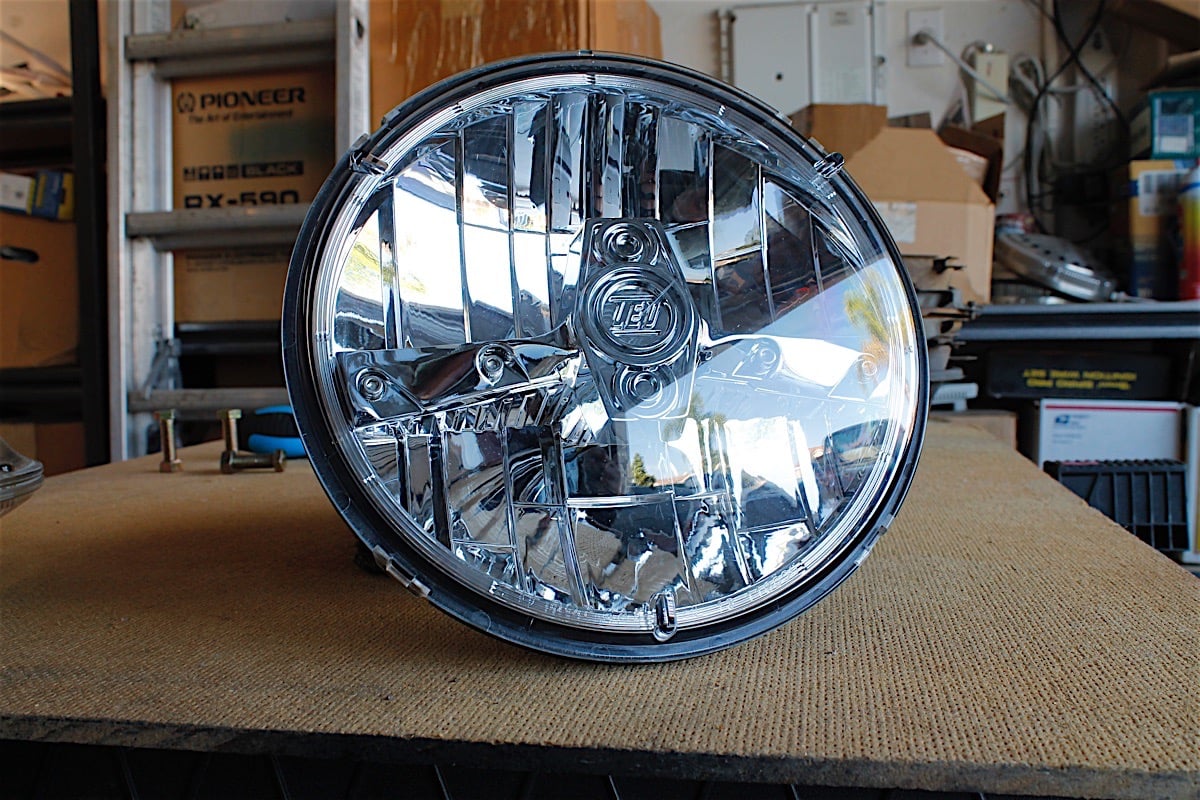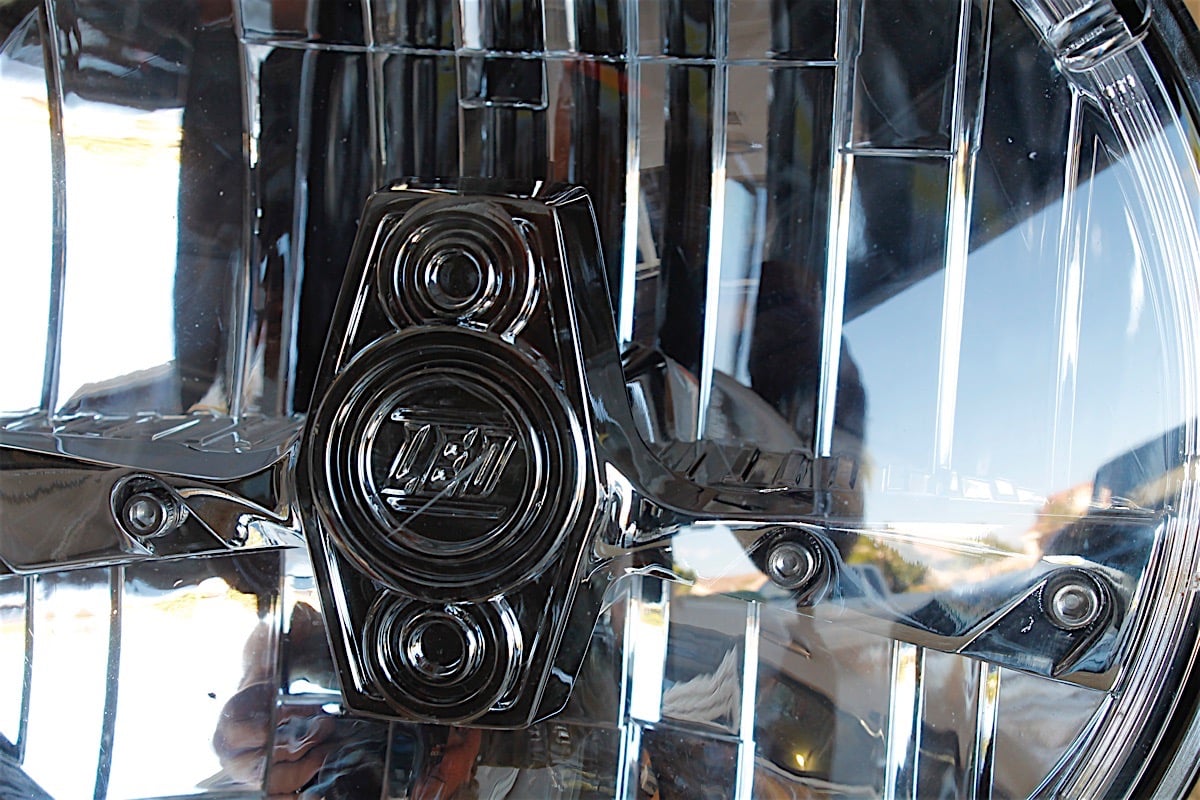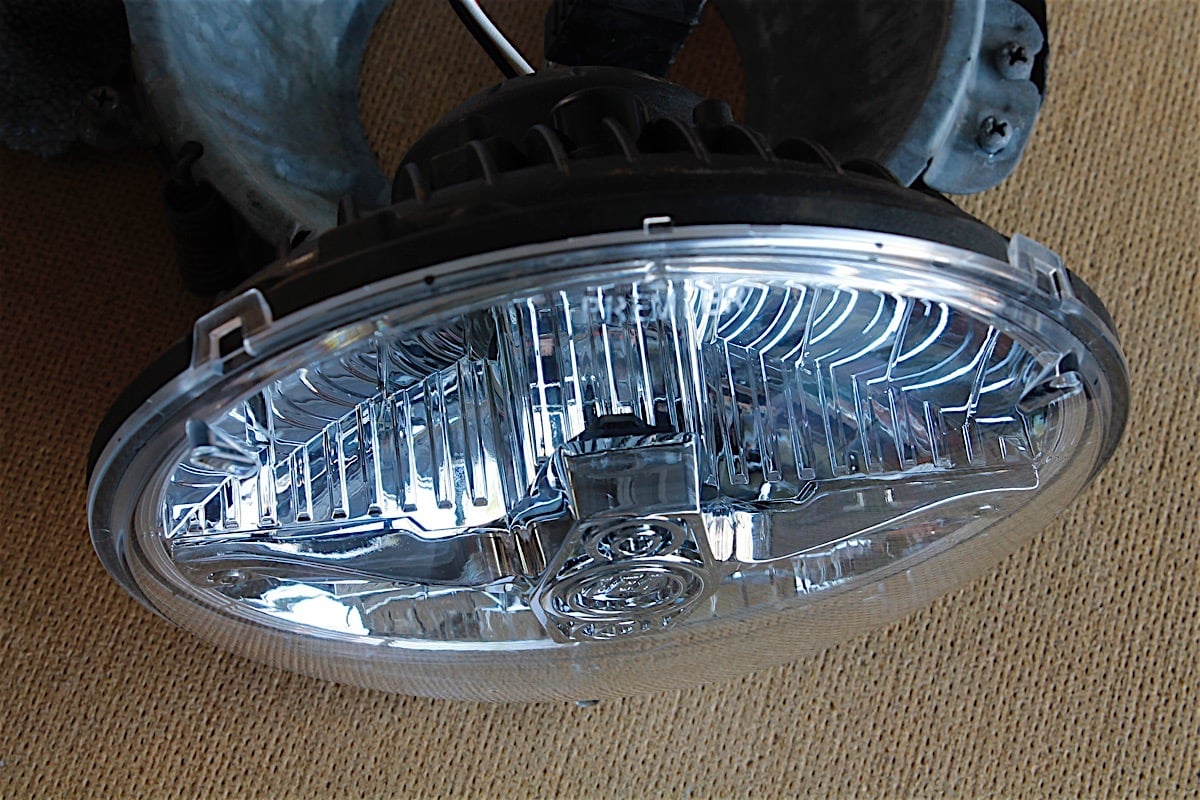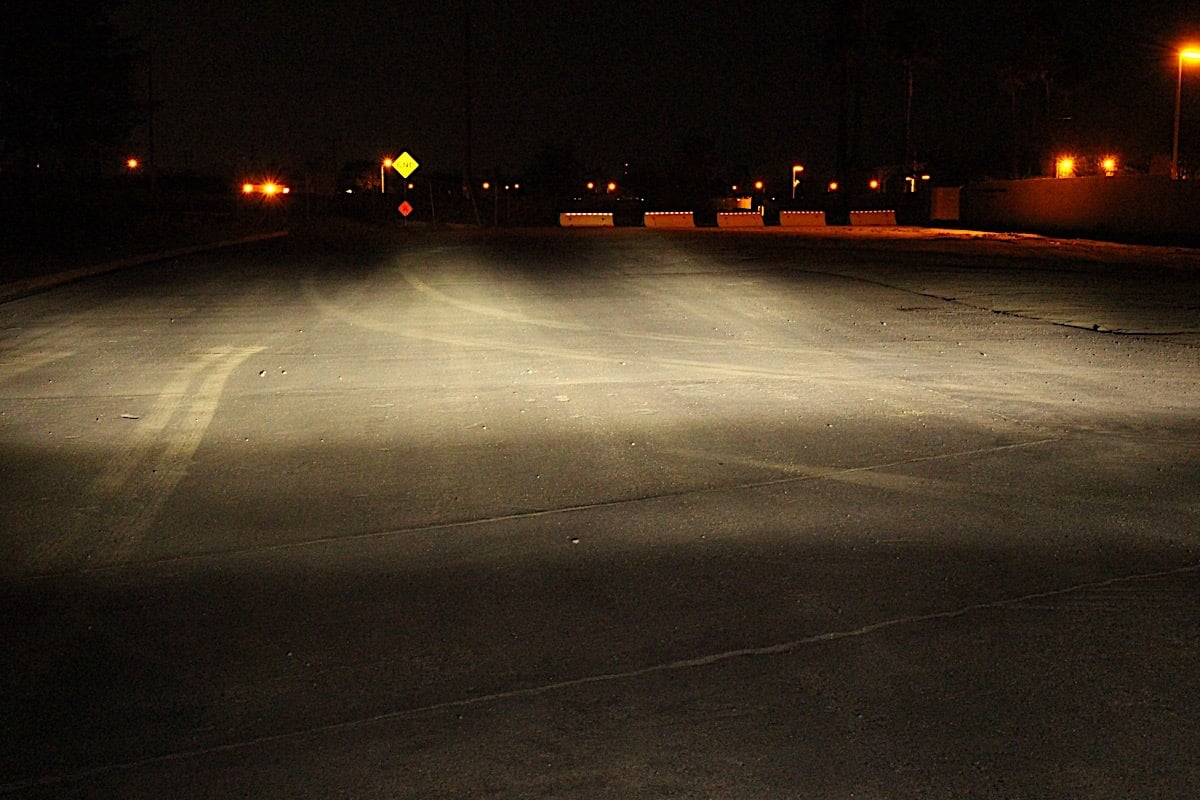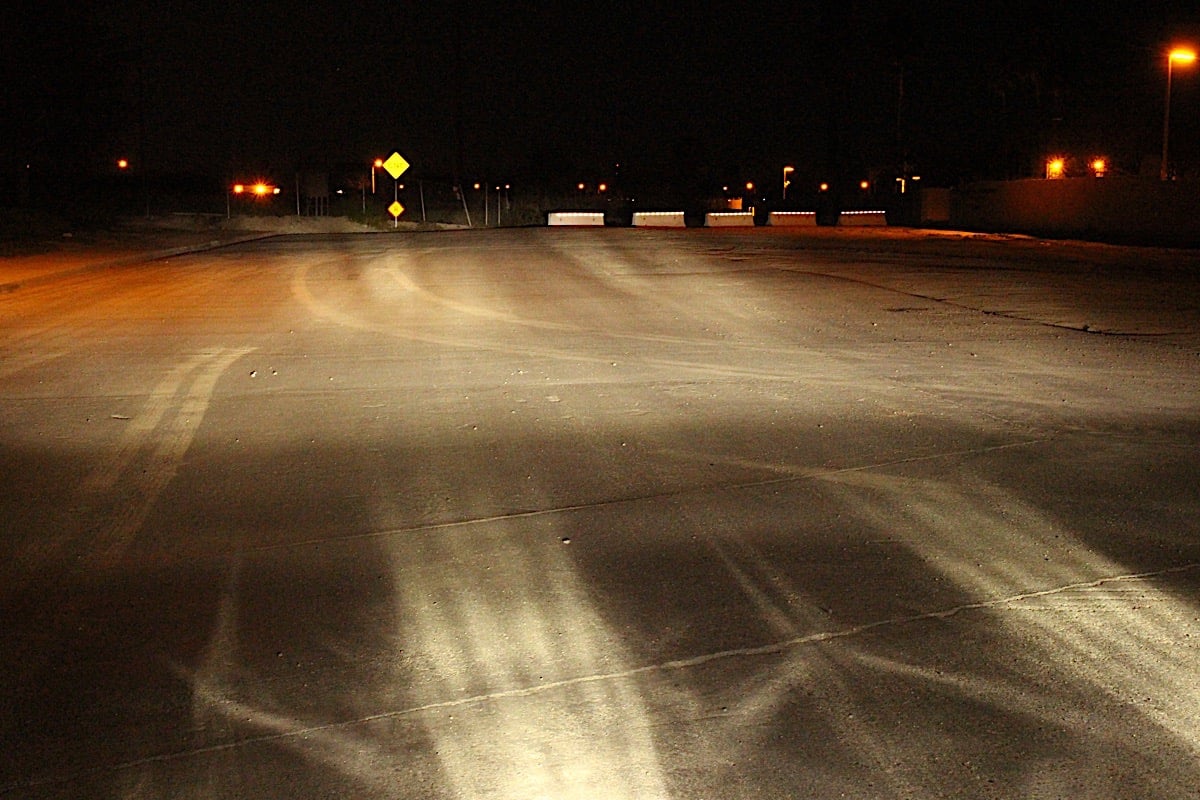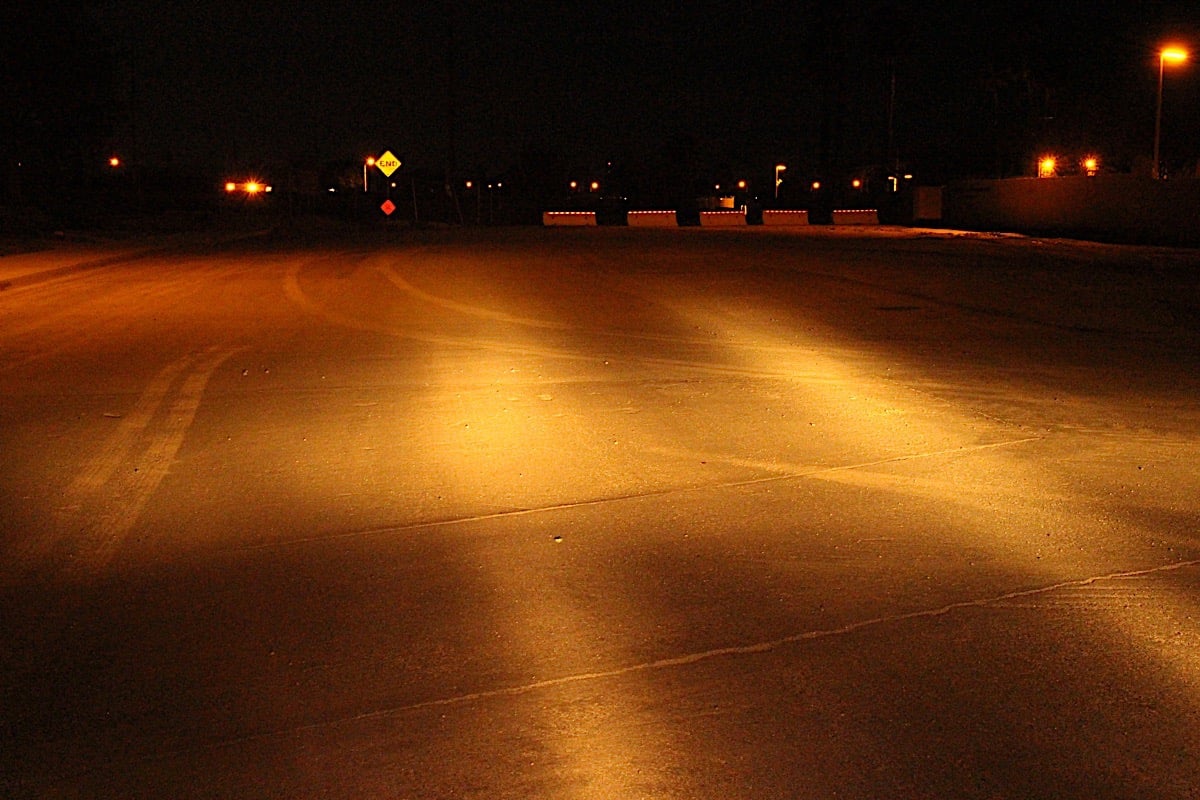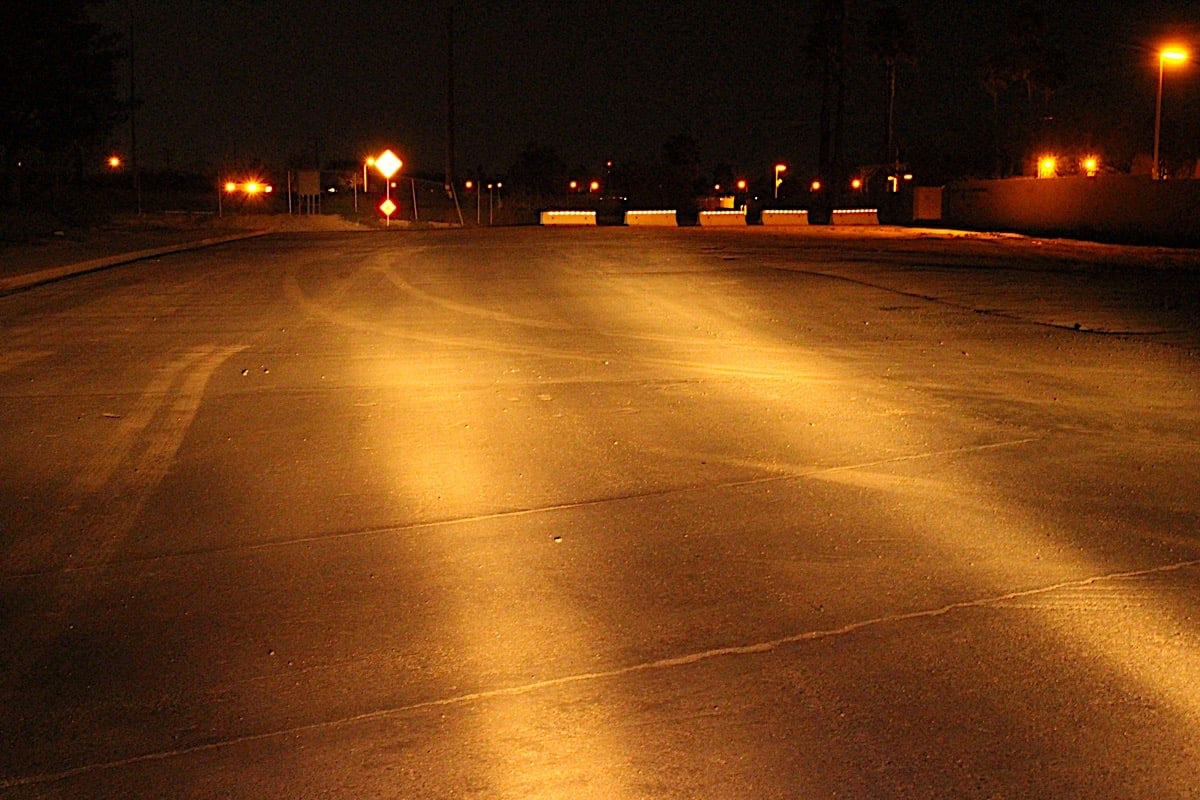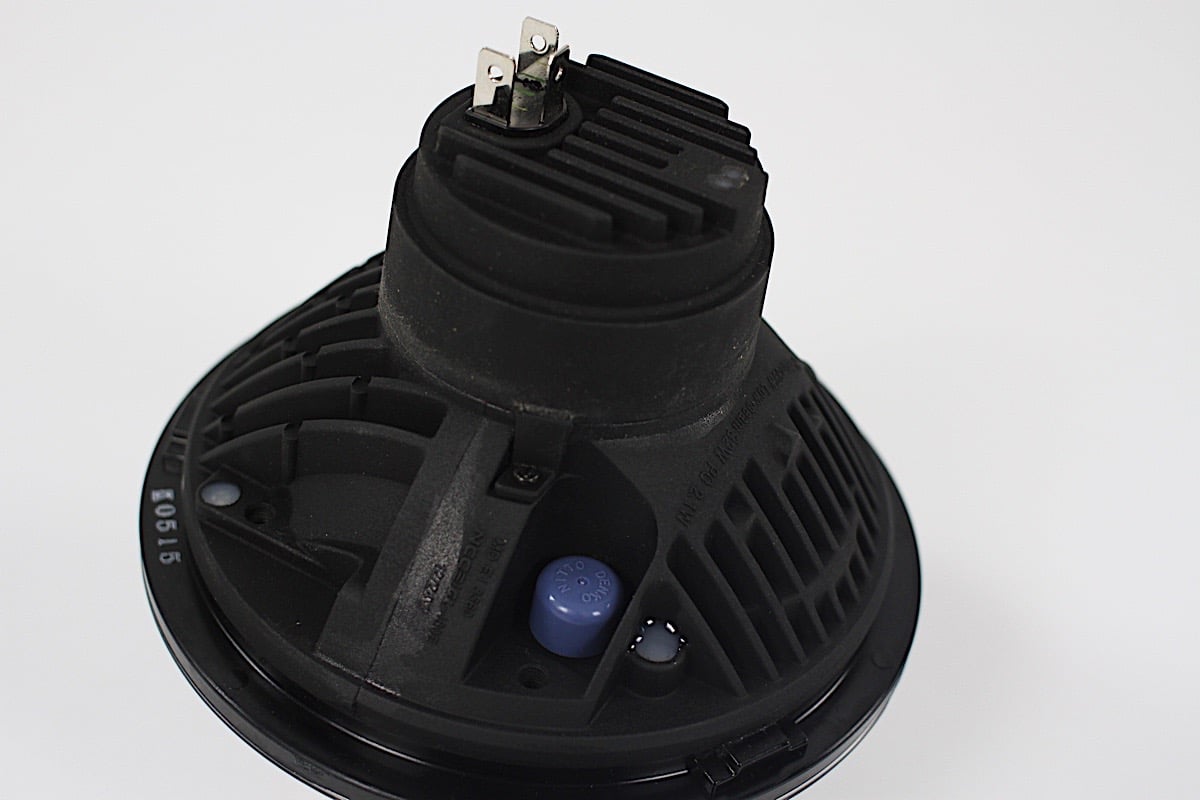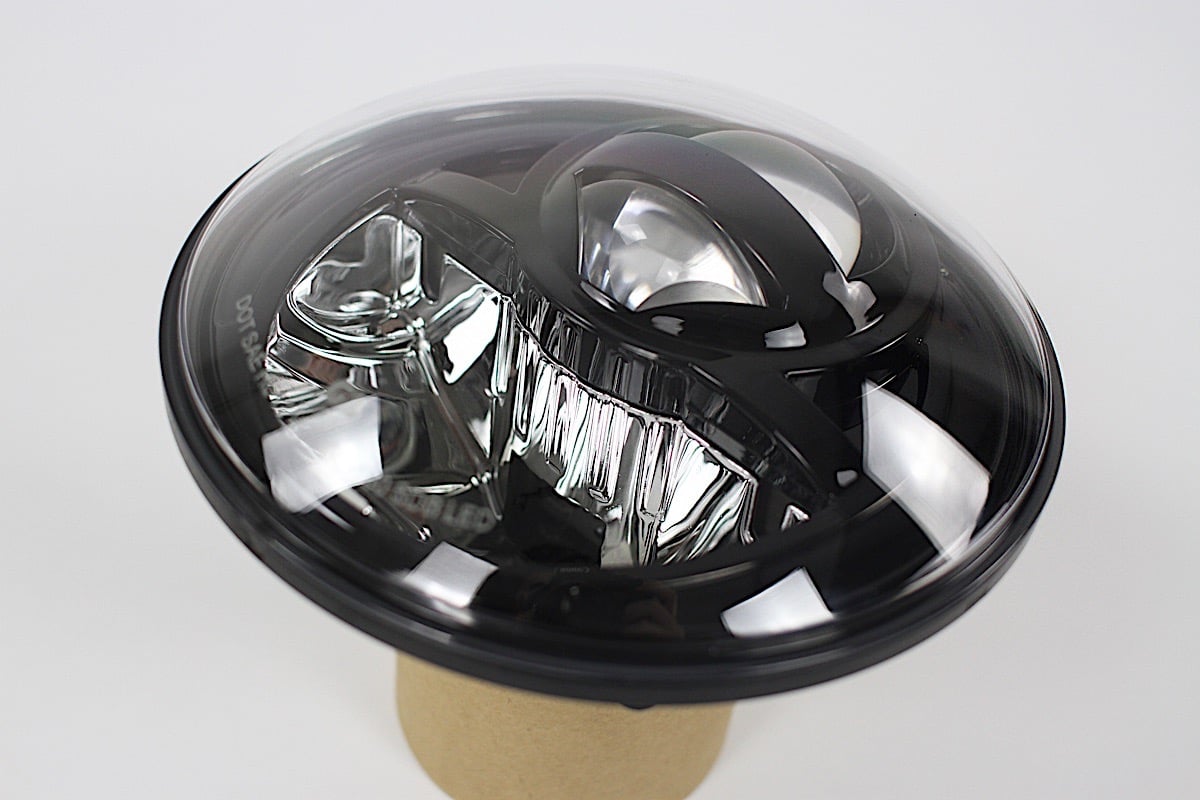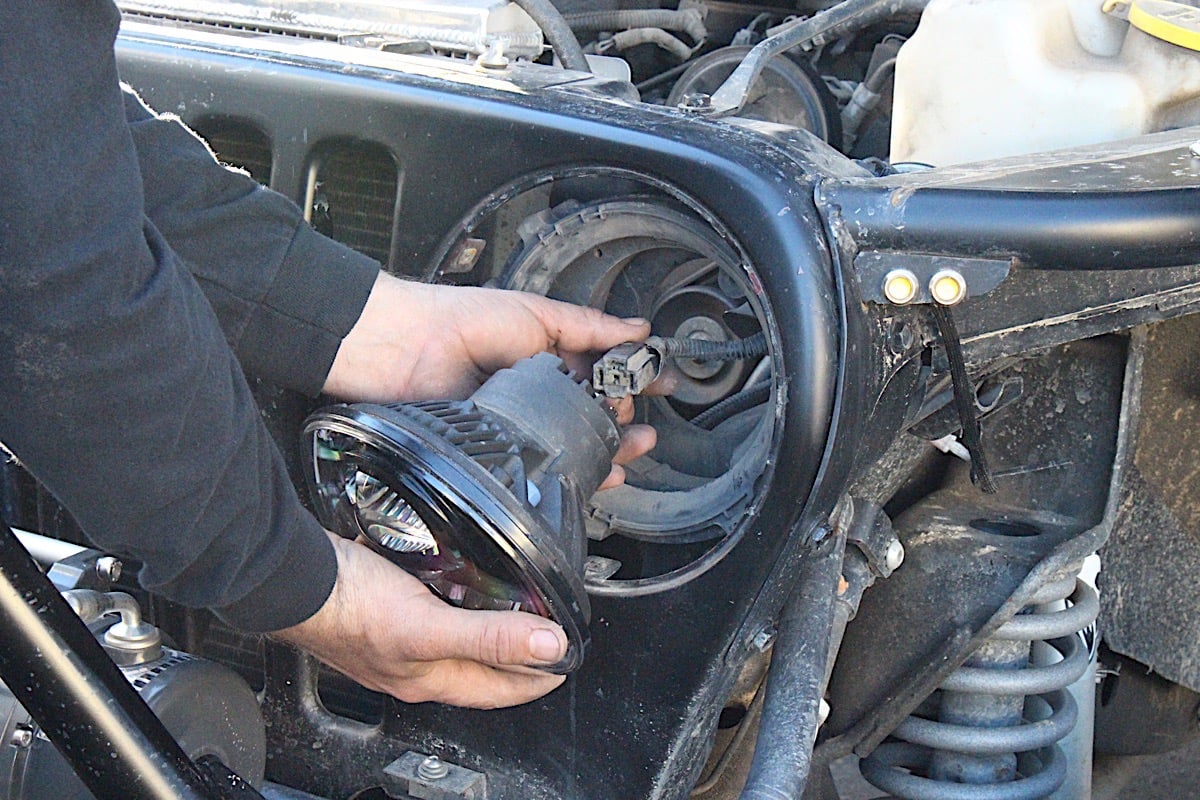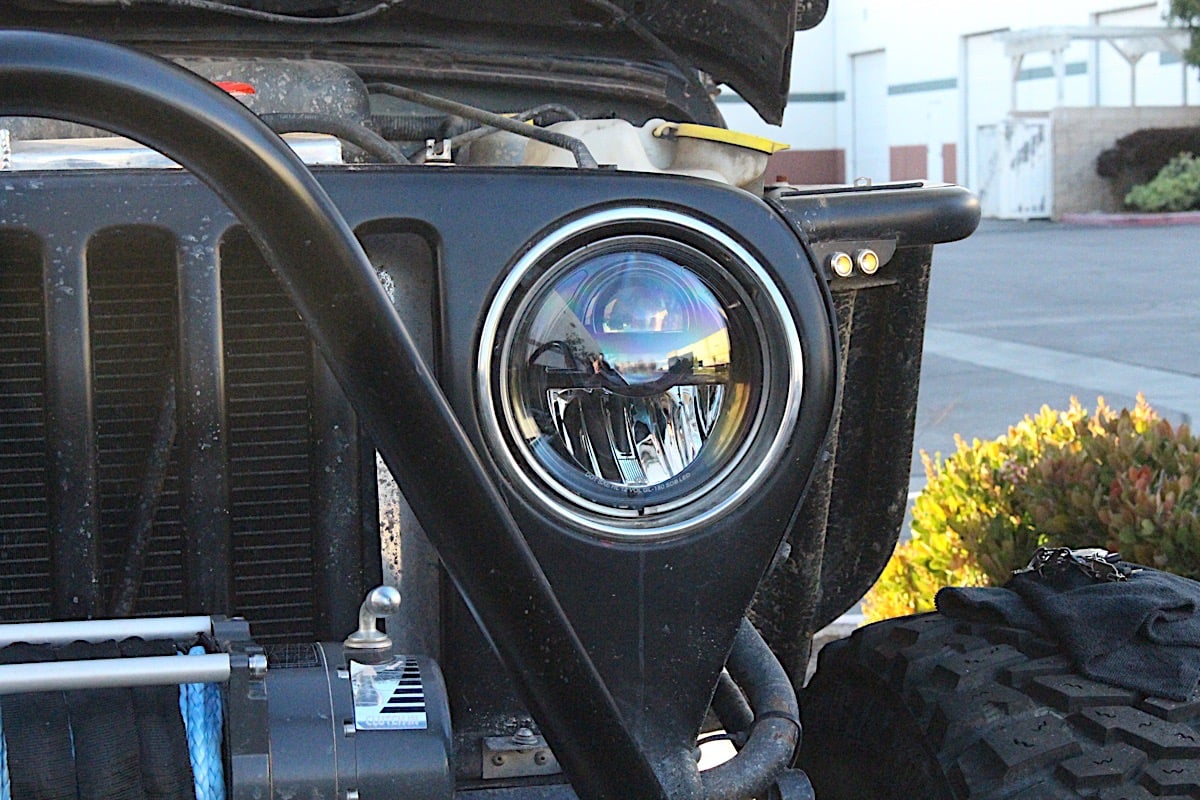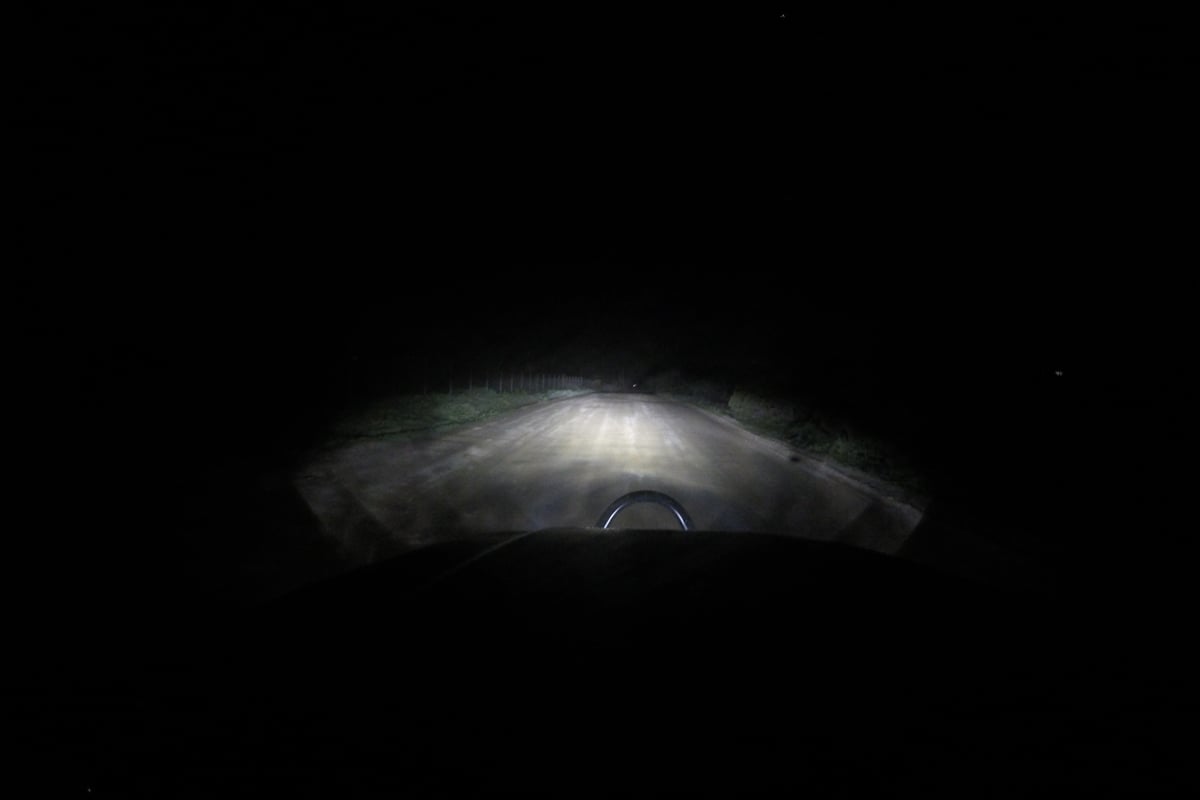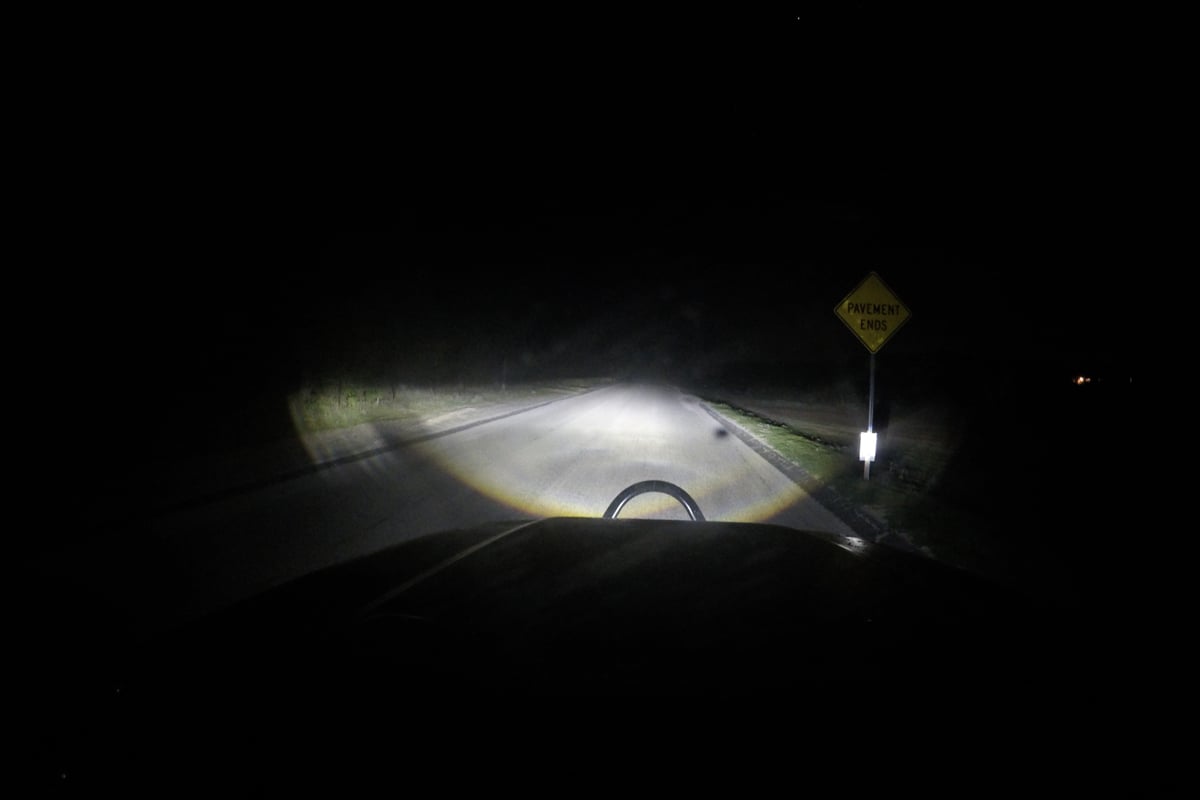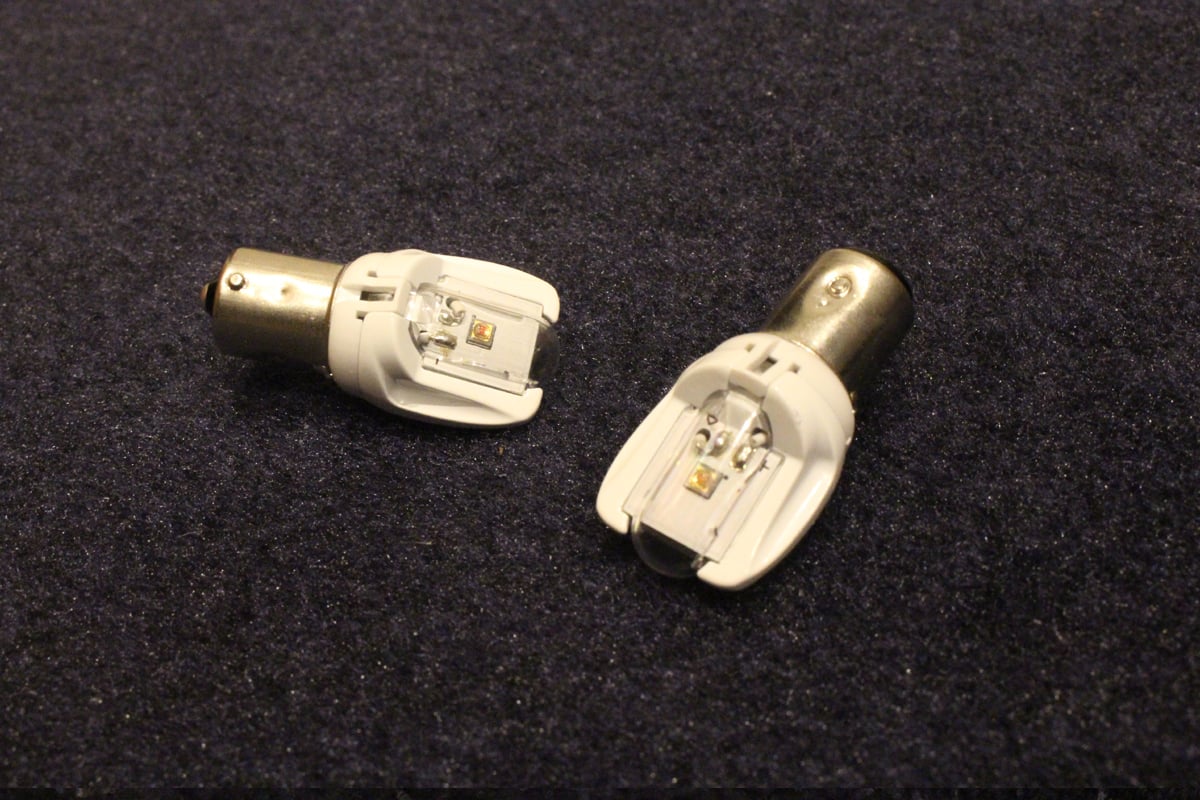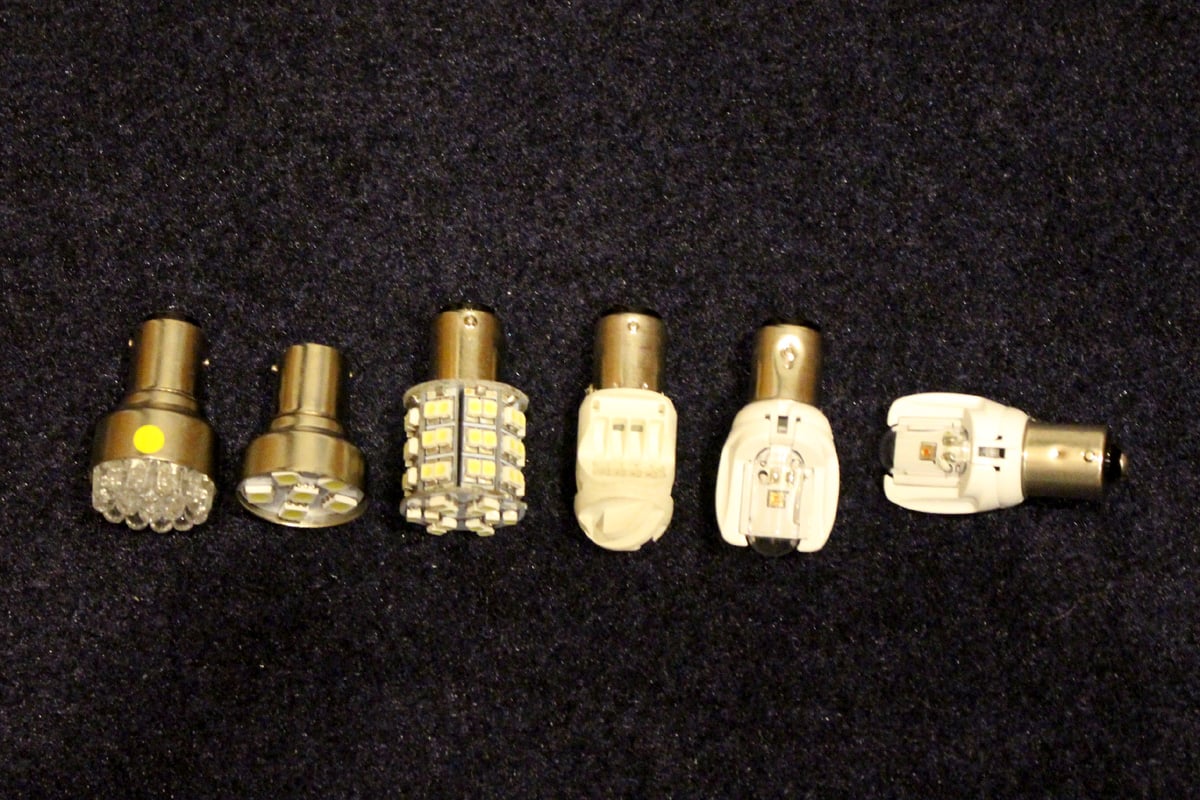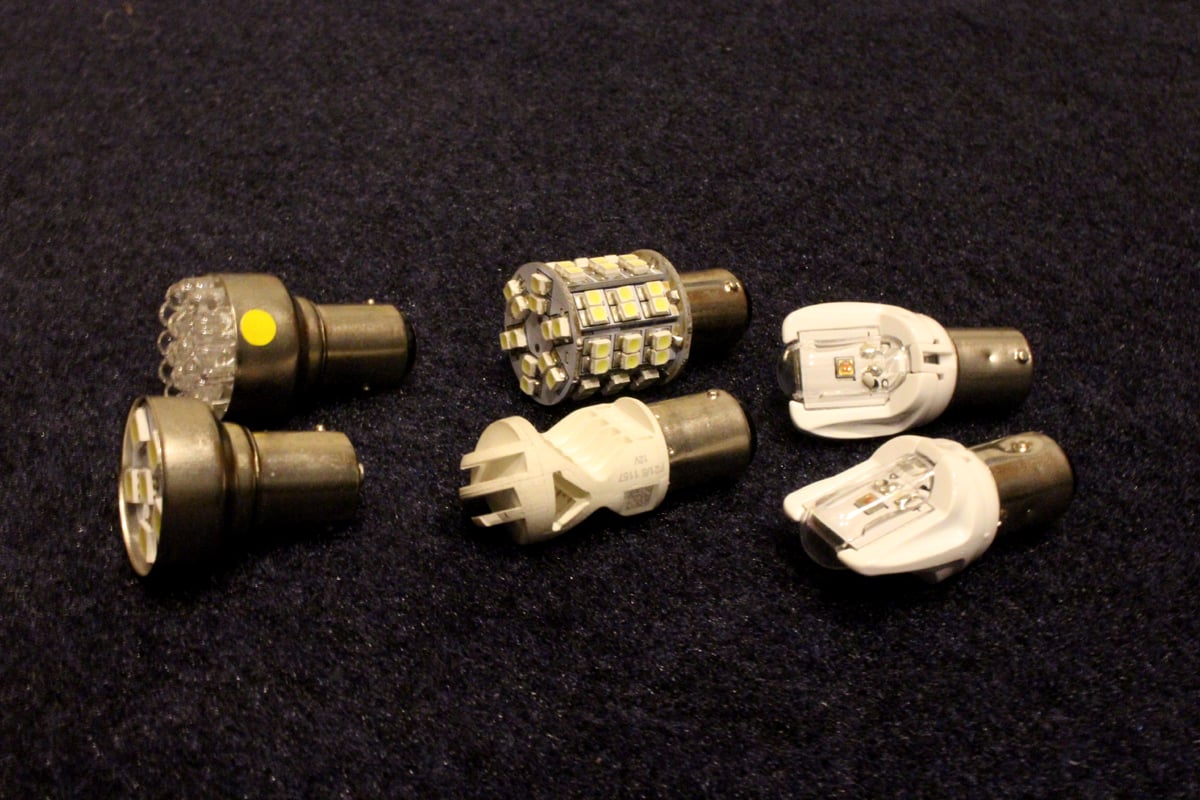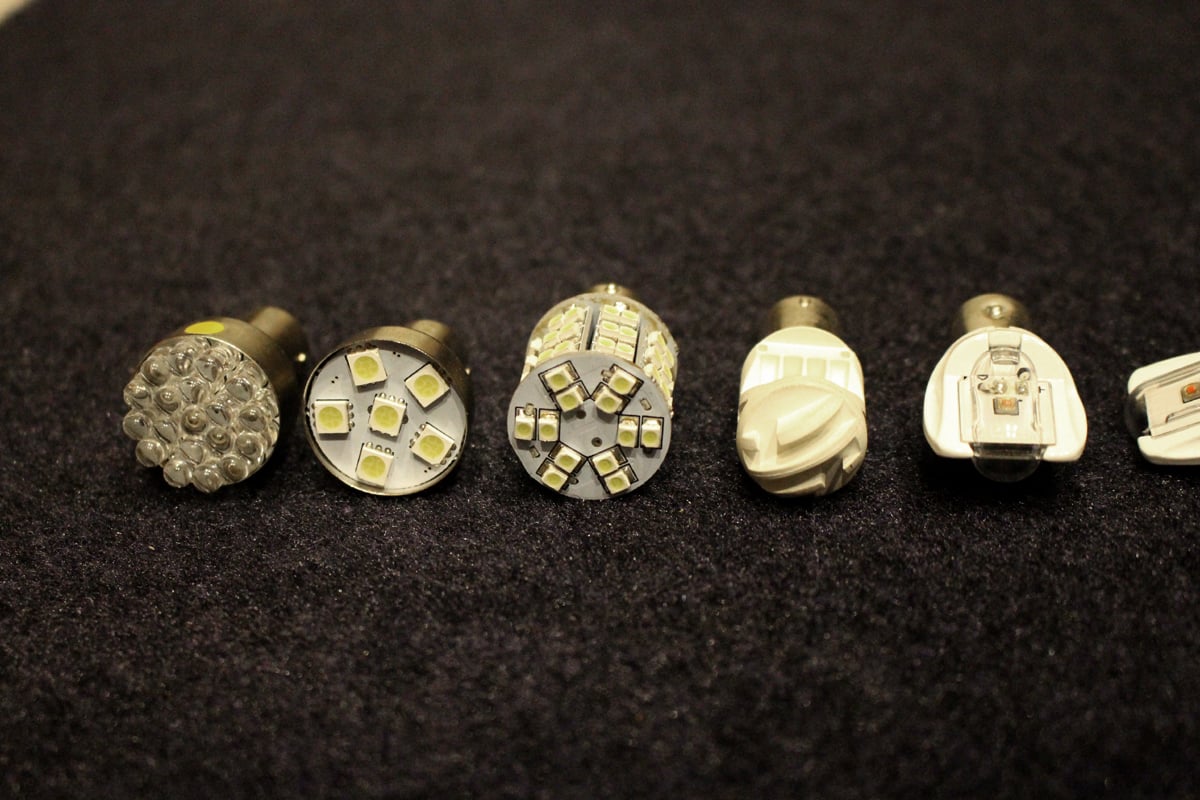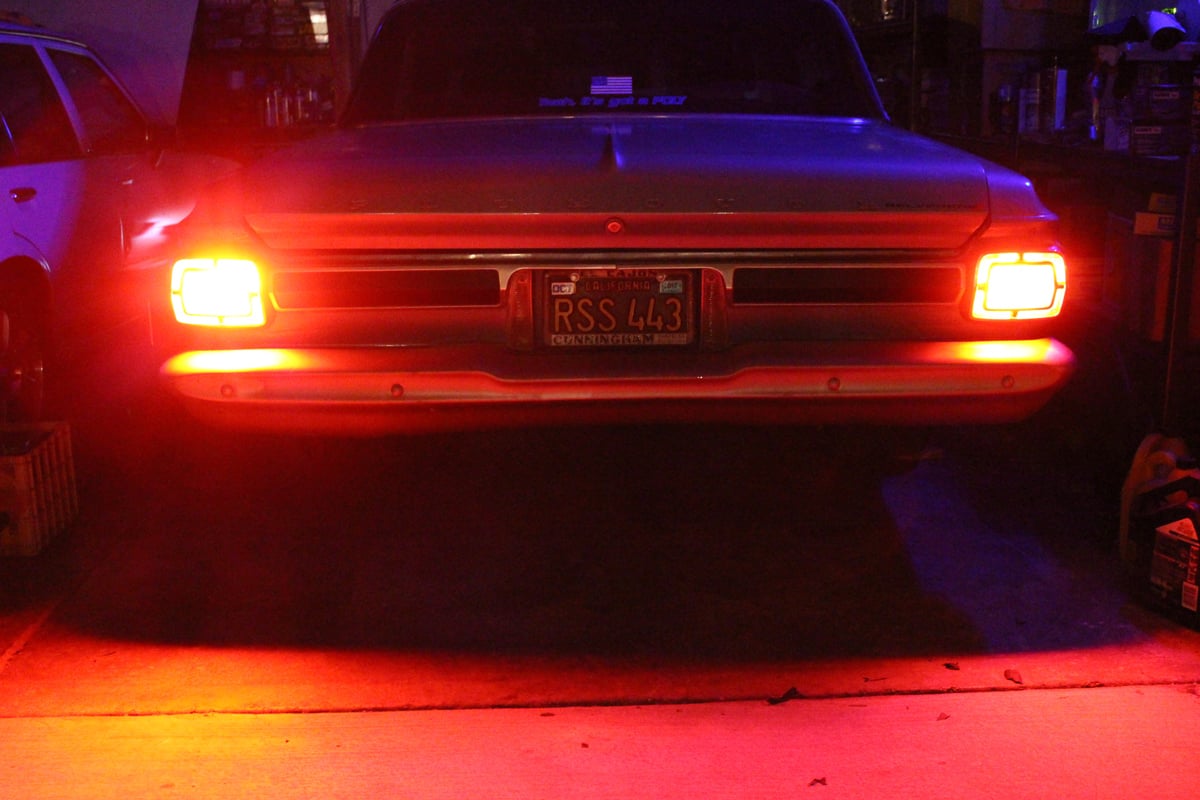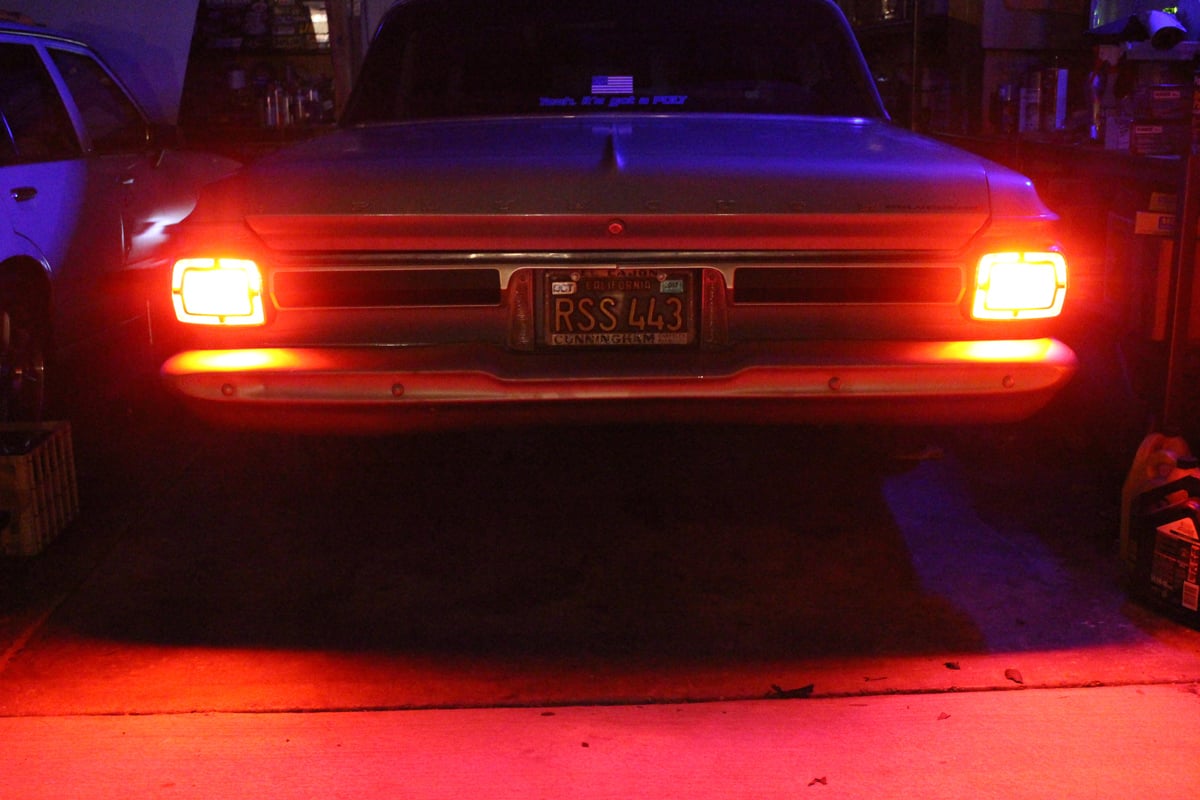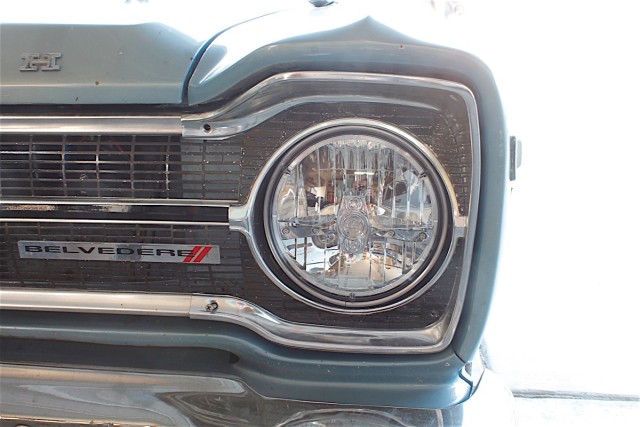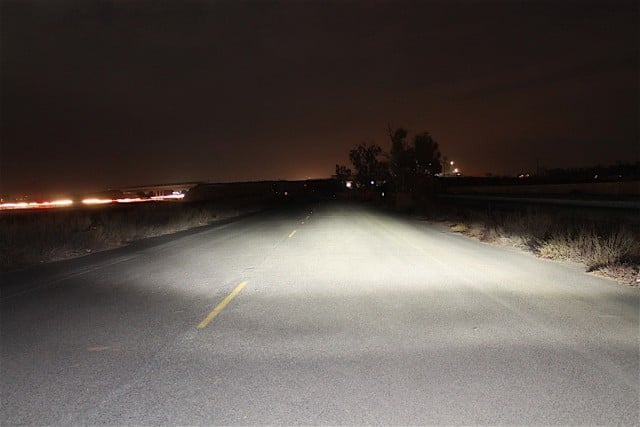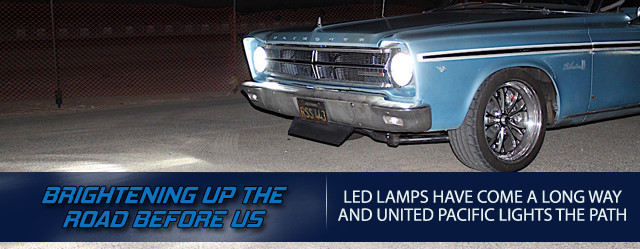 [1]If you query your memory banks, you’ll probably recall that in the early 1990s, certain automotive headlights produced a much brighter light than that of standard H6024 sealed beam headlamps. The first time you saw them, you likely flashed your brights, because nobody could possibly have a low beam headlamp bright enough to be seen from outer space. High-Intensity Discharge (HID) headlamps were the hottest thing on high-dollar luxury and sports cars, and the spectrum of light output from those Xenon-gas filled bulbs was so bright that they literally created daylight right in front of the car.
[1]If you query your memory banks, you’ll probably recall that in the early 1990s, certain automotive headlights produced a much brighter light than that of standard H6024 sealed beam headlamps. The first time you saw them, you likely flashed your brights, because nobody could possibly have a low beam headlamp bright enough to be seen from outer space. High-Intensity Discharge (HID) headlamps were the hottest thing on high-dollar luxury and sports cars, and the spectrum of light output from those Xenon-gas filled bulbs was so bright that they literally created daylight right in front of the car.
HID headlights put color back into the dingy, yellowish objects we were used to seeing in front of our cars. It was because of the light spectrum of HIDs – measured in units of absolute temperature, or Kelvins (K). HID lighting can produce a color temperature from a typical yellowish light (3,000K), to a bright, almost bluish light output (10,000K), and higher. But there’s another source of lighting that’s been giving HIDs a run for their money, and we reached out to United Pacific [2] for a set of LED (Light-Emitting Diode) headlamps to light the path for a classic musclecar, and a rugged off-road Jeep that spends some time off the beaten path.
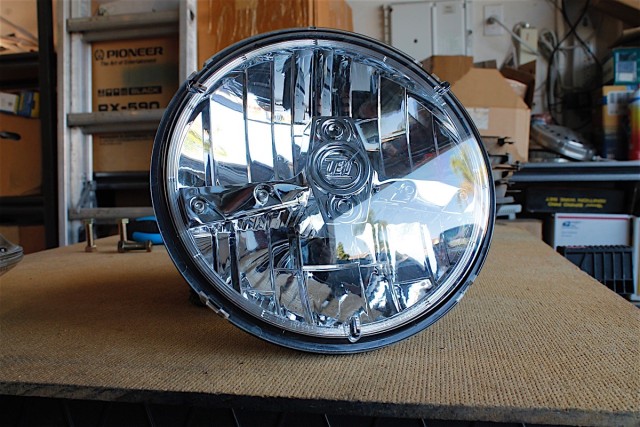 [3]
[3]Clearly, the reflector for this headlamp is quite different from a standard, sealed beam headlamp.
Light-Emitting Diodes
It’s no secret that LEDs are not just a part of the future of lighting, but a huge part of present-day lighting as well. We see them in flashlights, replacement bulbs, traffic lights, even in our home lighting. What began as a small, somewhat dim light used for identification in electronics has now become a compact, bright source of light that uses very little electricity to provide enough lumens [4] to illuminate objects far better than conventional bulbs.
When LEDs first came on the market as a consumer-bought product, they were rather pricey for a tiny, low consumption light source. LEDs naturally emit a light in the red frequency spectrum; later development led to blue LEDs, which helped pave the way for bright white LEDs.
The replacement LED headlamps install just like any other sealed beam lamp would install, no special instructions, no need to add or change your headlamp wiring.
This process began in the 1960s, and progressed until we had brighter LEDs in the mid 1990s. Today, LEDs are not only more efficient than Halogen lighting, but they last considerably longer and can produce as much or more light than their old school counterpart. The quality of light is far greater, reaching the higher color temperatures.
The manufacturers of HID kits have an obligation to state that they are not legal for street use. -David Odegard, United Pacific
“Also, most of the kits on the market today are designed to replace a standard H4 type bulb in an existing housing, and those housings are not designed for the use of a Xenon bulb,” he said.
Those kits he spoke of typically consist of a bulb, wiring, and ballasts. While they’re not difficult to install in an existing H4-type lamp housing, they don’t perform in the same manner as a true HID lamp in a housing designed HID bulbs.
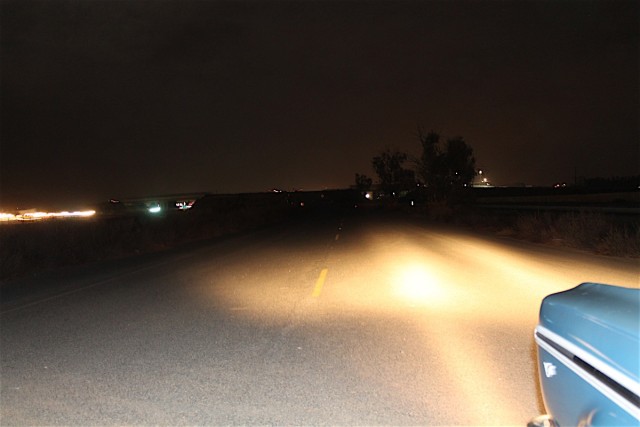 [10]
[10]Standard halogen bulbs often produce a yellowish light, changing the color of objects in front of you. Prior to HID and LED lighting, it was possible to install a higher wattage H4-style bulb. The standard was 60/55 watts, while a 90 watt or higher bulb requires better wiring than the factory installed – more power means more heat, and thicker wires should be installed at the same time.
Where the problem lies is in the glare that comes from an HID bulb in the incorrect housing; there is a significant amount of glare above the cutoff line on a typical, legal HID headlamp. That additional glare can blind oncoming drivers and make it difficult for them to see. It’s also more than double the amount of light output of a standard, Halogen bulb, so you can imagine that glare could be quite blinding.
LED headlamps, specifically the conversion LED lamps that you can purchase from United Pacific, come in their own housing that was designed specifically for those LED bulbs. We did some initial testing of those LED headlamps, and upon installation, the first thing we noticed was that the path before us was much brighter, and the ‘beam’ was much wider than conventional Halogen bulbs.
Top: The LED lights put out a much brighter white light and they have a unique pattern that is much wider than the standard halogen lights.
Bottom: Conventional lights cost far less and don't last as long as LED bulbs. Some may project a beam further down the road than LED, but we liked the wider beam we got from the LED units.
LED Headlamp Pricing
The cost of an LED headlamp might initially sticker-shock you into changing your mind, as some can run as much at $500/pair. They’re about as costly as some lower-priced HID conversions (beware of the less-expensive HID conversions), however, United Pacific’s LED headlamps meet current DOT/SAE requirements for headlights. In other words: they are legal and have a DOT rating, unlike many HID conversion kits which state, specifically, “For Off-Road use only, not to be used on a public highway.”
The LED/Projector lamps we installed in our project Jeep provide plenty of lighting for night-time off-road activity. They, also, install in place of a standard, sealed beam headlamp.
The other factor about LED headlamps that may deter some buyers is that they don’t project as far down the road as some high beams do. If seeing a half-mile down the road is more important than what’s right before you, by all means go with a high-powered driving lamp.
This is not to say that the high beam light projection is not acceptable, because it truly is very noticeable and does its job as expected. However, some sealed beam headlamps are designed to project a little further than others, so standard Halogen lamps, in some cases, will light up objects further down the road.
Top: Low beam light output lights up a good area in front of our project Jeep.
Bottom: The projector high beam outputs a heavier, concentrated light in front of us. If you want more, there are higher powered off-road lights that help, but for the street and some trail use, these project LED headlamps do the job, and do it well.
The benefit of these LED headlamps that makes them a good choice for us is the amount of light they project right in front of us, the color temperature, and the wide pattern. These are all factors that make them a good choice for a classic car when driving on darkened streets without street lighting, or an off-road vehicle hitting the trails. Seeing more of what’s in front of us – and with a much brighter, white light – is where LED headlamps win us over.
Individual LED Bulbs
In addition to LED headlamps, we also installed single-bulb LED replacements for both 1156 and 1157 bulb applications, which are standard bulbs for classic vehicles. There are a few very inexpensive 1157 replacement LED bulbs at parts stores that utilize multiple LEDs mounted to a single housing, but the biggest problem with these bulbs is that they typically have a smaller beam angle that points towards the lens, not the reflector.
Inside your lamps, whether it’s tail/brake lamps or signal lamps, the shiny reflector is the key to reflecting more light inside the lamp and to the lens. Some companies have tried to combat this poor lighting effect by adding additional LEDs, or pointing them towards the reflector. They’ve even tried to seduce us with up to 20 SMD (Surface Mounted Devices) LEDs, some costing twice as much as a standard LED.
Top: The United Pacific bulbs had the brightest output of all the bulbs we tested, making them easily seen during the day.
Bottom: Replacement LED bulbs have can have what they call "super bright" LEDs or high-powered CREE SMD LEDs like the first three at the left. They weren't worth the money spent, and were not as bright as our conventional bulbs.
The standard LEDs are typically only effective when seen from directly in the path of the individual LEDs, and from an angle, they sometimes aren’t producing enough light to be seen during the day. SMD LEDs are brighter, but are also prone to failure because there are too many LEDs mounted to a single bulb socket. When you’ve got more than 20 bulbs, your chance of a problem can multiply.
United Pacific showed us its 1156 and 1157 LED replacement bulbs, and the unique design uses only four high-power LEDS designed to shed light in a wider beam angle that also bounces light off of the lamp reflector inside. This produces more light on the lens, helping it to be seen from all angles.
We tried a much different test that we didn’t tell United Pacific about. We purchased the expensive high-powered LEDs found at the parts stores to compare to our United Pacific LED replacements. You’ve likely seen the displays – the white bulb with angled LEDs compared to a standard automotive bulb. These bulbs were definitely far superior to the standard incandescent and multiple-LED infused replacements, but how does United Pacific stand up to these parts store miracles? The results are below.
Top: The driver's side tail lamp has the United Pacific Red 1157 LED replacement bulb, the passenger's side tail lamp has the store-bought high-power LED replacement bulb. The difference is noticeable between tail lamp (left) and brake lamp (right).
Bottom: with the United Pacific LED bulbs in both tail lamps you can see how the intensity has increased over the other brand above it on the passenger side lamp. Both the tail lamp (left) and brake lamp (right) produce far more light than any other LED replacement bulb we tried.
We set up our camera and took photos of the light output of both bulbs, and the difference was phenomenal, especially considering both high-power LED replacement bulbs were similarly priced. The light emitted from these bulbs was much more intense, and is evident in the photos above. United Pacific was the winner, hands down, and we’ve tried just about every style of 1157 LED replacement bulb. After all, the object of these bulbs is to use less power, but also to be seen in both daylight and darkness.
Long-Term LED Light Testing
Our long-term test of these lights was essentially to see if we could get so used to them that we couldn’t live without them. After several months, we put our old, dingy-yellow lighting back in our car to see if we could be comfortable with our archaic lighting system. We can tell you with certainty, that having the LED lights for a few months and switching back was literally a night-and-day difference. The impact is enough to make you think about LED headlamps for your other vehicles, too.
However, the low beam light is where this LED headlamp really impresses us, because we now have a much broader beam of brighter white light before us, which means that taking corners on those darkened streets can now be done with much more confidence. When the high beams are on, we can see quite a ways down the road, and they do project very well with a distinct pattern. For the cost, we feel that it’s a valuable upgrade, because nothing beats better night vision – and with a headlamp that doesn’t flicker at idle, or dim when the brakes are applied, it’s a welcome addition to a classic musclecar or an off-road vehicle.
You can find DOT, street legal LED lighting at the United Pacific website [2], and all sorts of other combinations of halogen lighting with halo LEDs or LED signals built into the headlamp for a cool look on a street rod or classic truck, too. If brighter, better lighting is what you seek, LEDs have come a long way and are far less expensive than the factory HID lighting, which can run a couple thousand dollars.


